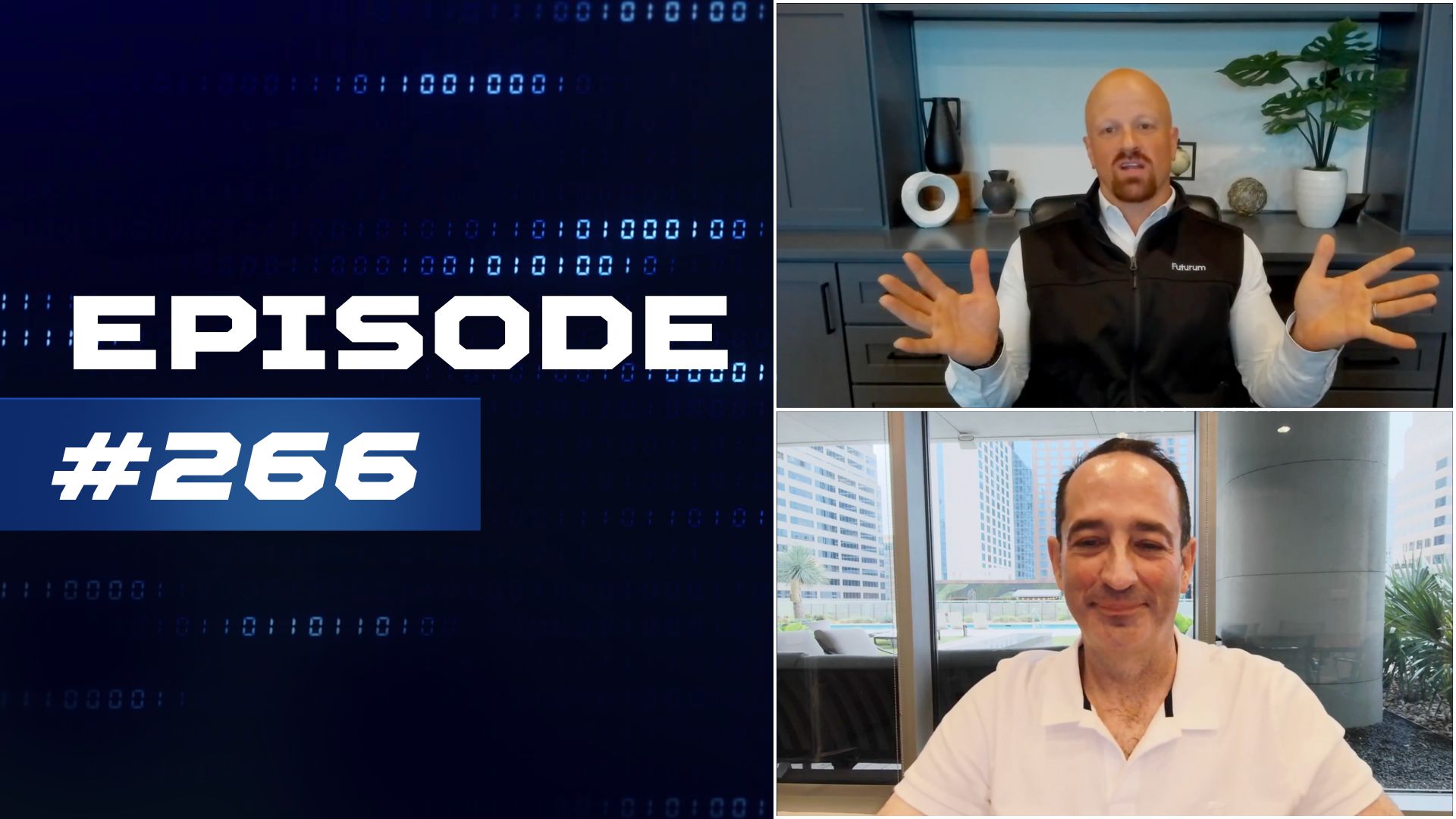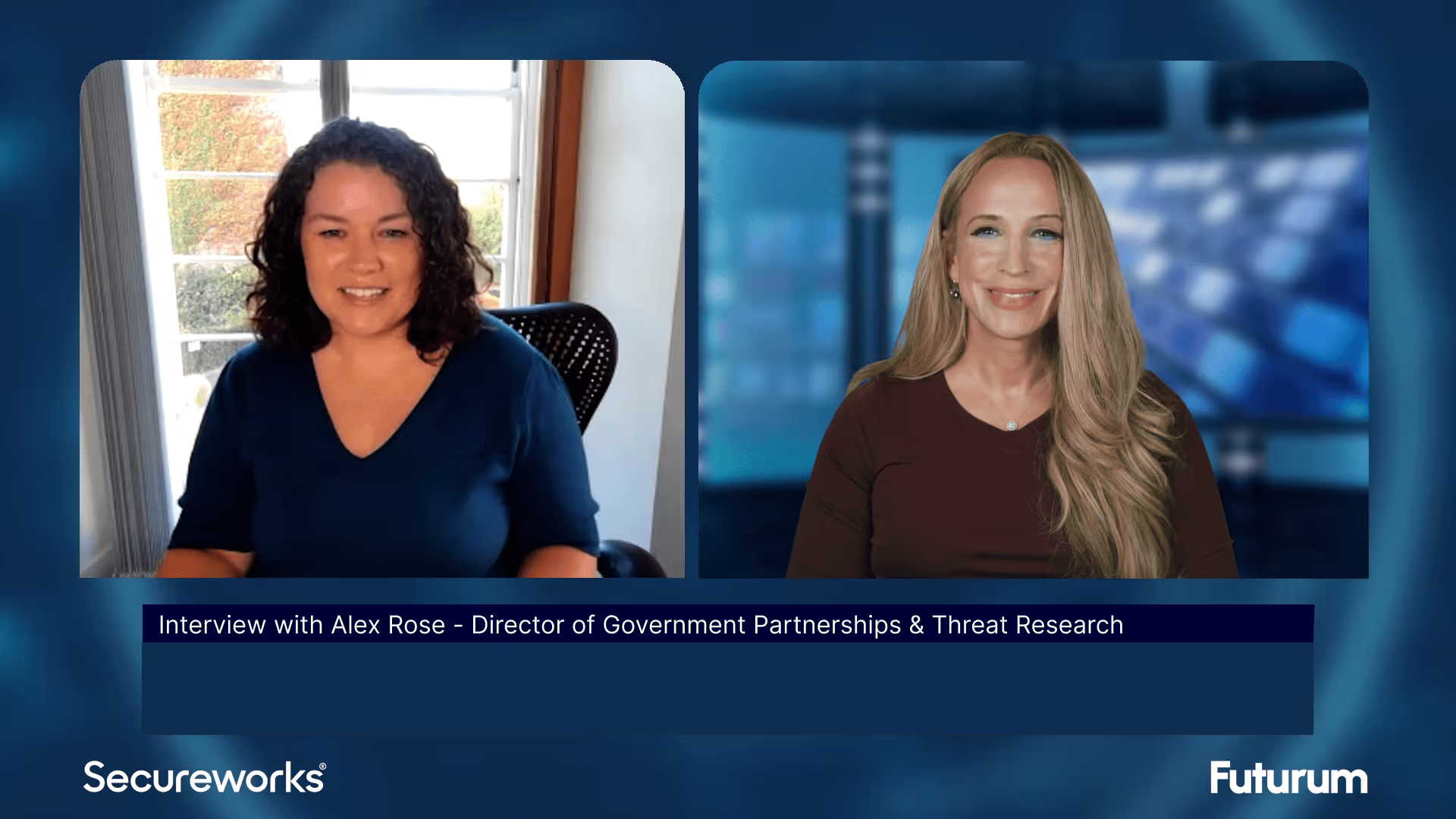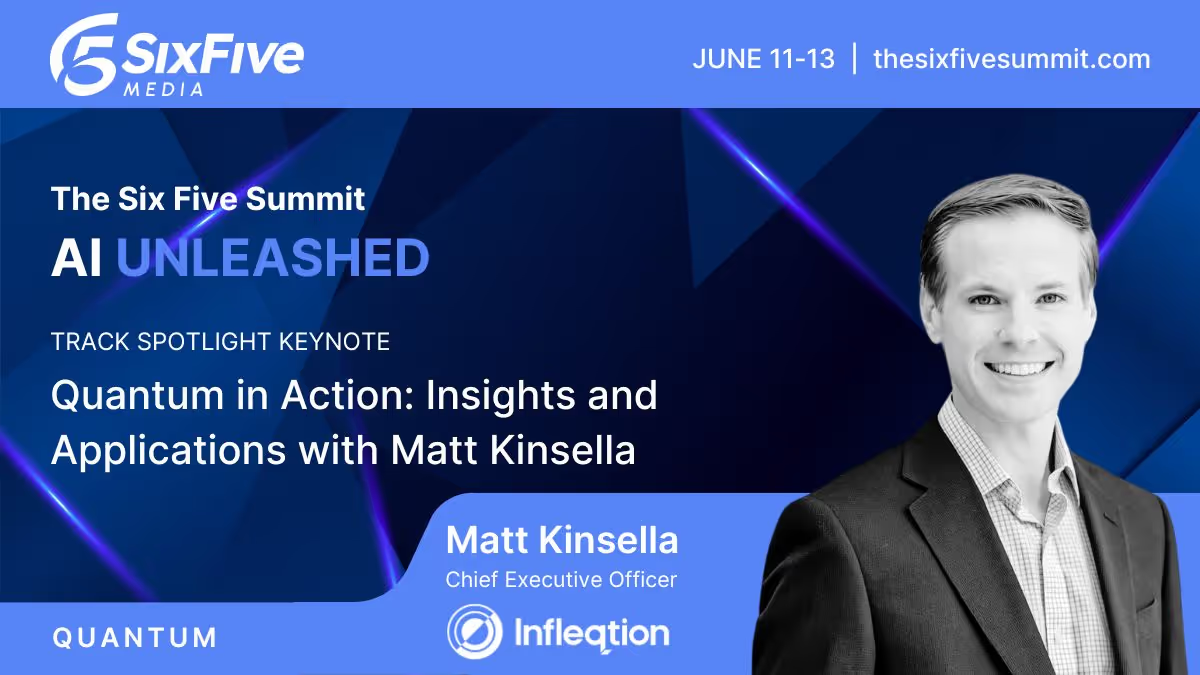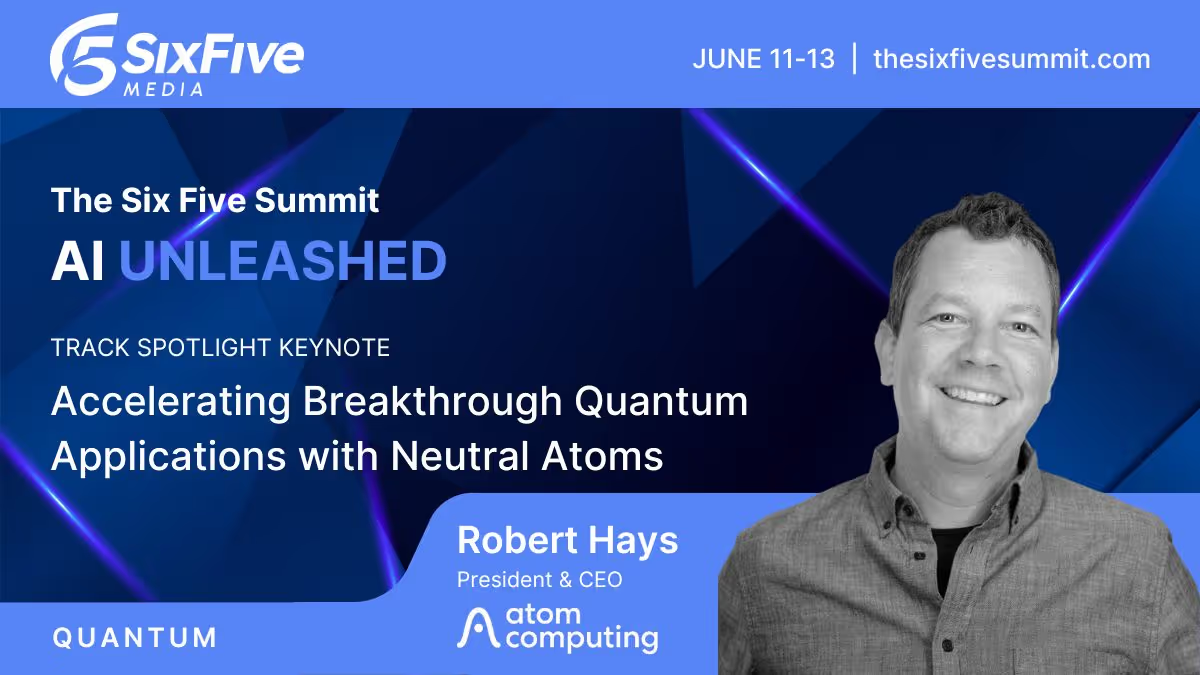Toyota, AWS and Deloitte Discuss the Impact of Generative AI on The Automotive Market
Karthik Bharathy, Director at AWS, Chris Jangareddy, Managing Director at Deloitte, and Philip Ryan, IT Supply Chain GM at Toyota join Daniel Newman and Patrick Moorhead, sharing their insights on revolutionizing customer experience and market share with generative AI.
Generative AI is disrupting industries and automakers are not immune. Daniel Newman and Patrick Moorhead are joined by Amazon Web Services' Karthik Bharathy, Deloitte's Chris Jangareddy, and Toyota's Philip Ryan to discuss the transformative power of generative AI in the automotive industry, AWS's innovative technology like Amazon Bedrock and SageMaker, Deloitte's strategic incorporation of GenAI, and Toyota's strategic imperatives in AI that collectively drive enhanced customer experiences and increased market share.
Get their insights on 👇
- The impact of generative AI on customer buying decisions and its uptake across industries, highlighted by AWS innovations
- Key business outcomes from Deloitte's GenAI use cases and the unique AWS-Deloitte partnership value
- Toyota’s approach to addressing its "impossible challenge" in the IT Supply Chain, strategic priorities surrounding GenAI and AI, and the business impact seen from collaborations with AWS and Deloitte
Learn more at Amazon Web Services.
Watch the video below, and be sure to subscribe to our YouTube channel, so you never miss an episode.
Patrick Moorhead:
The Six Five is On The Road here in Las Vegas at AWS re:
Invent 2024, and it should not come as any surprise. The topic is AI, the multiple ways to implement AI, the different building blocks. Dan, we’ve pretty much seen it all so far.
Daniel Newman:
Yeah, the event’s been great. We’ve seen multiple keynotes now. We’ve had the chance to spend quite a bit of time with the executives, partners, customers, and of course, I mean the floor is always… The energy is incredible, especially as you’re moving between location and location. This thing’s like the size of CES now, and I think that’s pretty indicative, Pat, of just how significant the sprawl of AWS and its ecosystem has become. It’s moving really quick.
Patrick Moorhead:
And one of the things I love to do on the show, and I know you love to and our audience loves it too, is I call it the grand purifier, which is to actually have people who are using the technology up on stage, up on the virtual stage in addition to the vendors. But we’re even doing one better here, right? We have a partner, we have AWS, and we have a customer here. We have AWS, Toyota, and Deloitte. Guys, welcome to the show.
Philip Ryan:
Thank you for having us.
Karthik Bharathy:
Thank you.
Chris Jangareddy:
Thank you.
Daniel Newman:
Yeah, it’s a lot of fun to have you all here. And what Pat said is absolutely true. I think we all sort of know customers. It’s the fire hose, of course, AWS you have your own fire hose. I mean, in terms of how much you guys put out feature wise, I’m sure all of you have enjoyed that. It’s kind of being a good victim in these cases.
Patrick Moorhead:
It’s great-
Daniel Newman:
Too much technology.
Patrick Moorhead:
It’s opportunity for the partners and hopefully solving problems for the customer.
Daniel Newman:
Too much, but having said that, at the same time, I think all of you like to see your peers, you like to hear, hey, what are the others in our industry doing? What are our partners, vendors, suppliers, what are they doing? And then of course, as the integrators and consultants, I think you were really supposed to bring that 360 degree view, put it all together. So I’d like to hear from all of you. I mean, Karthik, it is your show. It is AWS. So we will give you the honors of going first. I’d love to hear just what you’re seeing in terms of Gen AI. It’s been a big couple of years. How is it impacting your customers and of course their buying decisions?
Karthik Bharathy:
Absolutely. I think the proliferation of Gen AI has created a massive shift in industries. While we continue to hear from customers about how they can leverage AWS Cloud to lower their costs or eliminate tech debt, we are also increasingly hearing about how they can embrace Gen AI to drive more innovation and sort of reinvent themselves and drive more business value for themselves and their customers. Which is why over the last year we’ve announced a wave of services and new capabilities related to Gen AI for Amazon Bedrock, Amazon SageMaker, and Amazon Q. And we also partnered with Deloitte in making sure that customers can embrace those Gen AI innovations in building those solutions. As I see it, Gen AI is no longer a boardroom conversation, but line-of-business users are building Gen AI applications for various different use cases in industries that they operate in.
Patrick Moorhead:
Yeah, so mentioned Deloitte. I mean, Generative AI is tough as much as we see the Big 10 event and the presentations, this stuff is tough. Of course, you know that being at Toyota, but Deloitte, you’re out there to help people and clients do this. I’m curious, how do you work with AWS on, I’ll say specifically POCs, Generative AI POCs? Is there a playbook you use?
Chris Jangareddy:
So as you know, Deloitte and AWS share more than a decade of relationship. And over the years we have jointly built many solutions, industry-specific solutions. And within Deloitte internally, we’ve built numerous accelerators depending on a client problem. And we use those accelerators to accelerate adoption of any technology or solving any business problem. So recently we’ve signed a strategic collaboration agreement with AWS. It’s a multi-year agreement where AWS and Deloitte jointly invest to help customers not only do pilots, but move those pilots into production. Because pilots, we’ve done pilots, significant number of pilots in the past, two to three years, but the percentage of pilots going into production has been only 30% up until now, 20 to 30%. And there’s many reasons why. So we are using our joint collaboration or alliance to really help customers understand the business value of a specific problem, how it can be solved, leveraging Gen AI and using some investments and the deep technology expertise in the services that AWS has to offer. Combined, we are helping working with the customers to move those POCs into production.
Daniel Newman:
And Phil, you are the customer on this panel. So let’s bring this to life. We’re seeing all this excitement on the technology. Both Pat and I have been observing the evolution of Gen AI in the clouds, and I think we’ve both seen the acceleration and we’re moving to this era from kind of how cool could this be to very practical, how does this help our business grow? How do we get more efficient? So share a little bit with us how you’re thinking about within Toyota, Gen AI as a strategic comparative.
Philip Ryan:
So our supply chain transformation sponsor likes to often say, we got to really make it easy for customers to do business with us. And that really sticks with us as an ultimate kind of North Star. And in doing that, if you think about it, when a customer comes online or into our dealerships, they expect… Or shopping or buying or servicing, they expect to get the information that they need when they want it, when they need it. And in order for us to do that, we have to really deliver that in a seamless way. So we also found out in trying to, let’s say, achieve that North Star, we had to kind of turn that inward to ourselves. It can’t just be outward. We have to make it easy to do business with ourselves internally. So it’s really shifted the way that we think about the technology and how we’re going to drive these seamless experiences both externally and internally to our enterprise as well.
Daniel Newman:
So just a quick follow up. What is the biggest challenge for you in the supply chain though? Because obviously you’re looking at that, that’s your…
Philip Ryan:
Yeah, there’s a lot of expectations in that customer experience in terms of, again, having the vehicle or just when am I going to get my fulfillment of the vehicle? So being able to hit that customer expectation that Nirvana, every single time with remarkable consistency throughout. That’s what the challenge is. Anybody can get lucky, but to be able to use our Toyota values, our Toyota production system in that way of thinking to drive that same type of consistency throughout, that’s what’s meaningful to us.
Patrick Moorhead:
So Karthik, I’ve been following AWS since you were invented. I think 17 years ago. I think it was this simple queuing service or was the first service out there. And boy, have you evolved since then. It’s pretty awesome. But one of the things that I’ve always noted is this customer obsession. And I know everybody says, every company says they are, but I truly believe that you are. And as an analyst, I need to watch the absolutes that I use, but I do believe that. You made hundreds of Generative AI announcements and all of those are investments that you had to put on your six page memos and figure out what you invest in. Can you talk about what some of the biggest investments are? But I want to make sure though you also talk about SageMaker and talk about the problems that it’s helping to solve. It’s really the second or third generation of SageMaker, a lot of improvements.
Karthik Bharathy:
Absolutely. Like you said, over the last year and even yesterday, you would’ve heard a lot of announcements from Matt about our Generative AI announcements. And today with Swami’s keynote in the morning centered around Amazon Q, Amazon Bedrock, and Amazon SageMaker, many of these capabilities are helping customers reinvent themselves and sort of embrace the Gen AI innovation. Just to name a few, there’ve been ton of innovations that’s been coming out. When you look at Amazon Q, for example, with Q Developer, we have agentic systems that help developers not only generate code, but also help them with generating test cases, generating code documentation, and also with code reviews covering the entire spectrum of their developer workflows.
With Amazon Bedrock, we recently announced the Bedrock marketplace, which has over a hundred plus cost-efficient task-specific models that customers can use and fine-tune those models specific to their use cases. Last but not least, with Amazon SageMaker, we’ve been making a lot of investments with the new SageMaker. We’ve evolved SageMaker to cover not just AI, but data analytics and AI bringing the best experiences of EMR, Glue, Redshift, Bedrock, and of course SageMaker Studio. There’ve been innovations in SageMaker around task governance, so customers can maximize their utilization of compute instances and assign it for tasks like training and inference and so on. Finally, we also have the SageMaker partner AI apps, so customers and partners can not only discover but publish and use those applications. So it’s seamless with the SageMaker AI. Net net, I will look at these as innovations that help at the infrastructure level for SageMakers that customers can use and build better Gen AI applications.
Patrick Moorhead:
You’ve been busy.
Daniel Newman:
I just love really hearing and seeing a lot of attention to SageMaker because I think that was such a core part of the multi-year AI investment that to some extent I think it doesn’t always get enough credit for during this transition. But Sage, I mean it really was the OG.
Patrick Moorhead:
Yeah, I mean it’s how they brought in. They’ve got the most amount of machine learning customers out there, and by the way, adding the data capabilities to it. I was asking about that I think last year, and you did it, and I think it’s great-
Daniel Newman:
Because of you.
Patrick Moorhead:
Just because of me.
Daniel Newman:
Because you ask. Because they always listen to you.
Patrick Moorhead:
No, his team read my team’s analysis and they just jumped right on it.
Daniel Newman:
I love that. I love when things work out. Chris, I want to bounce one your way. You were talking earlier about joint solutions and how you sort of work together. Can you talk a little bit about what you’re doing there and how that works? How that materializes? How that matures?
Chris Jangareddy:
Yeah, so I’ll give you a specific example. Something similar to what we are doing currently at Toyota, like Phil was mentioning, his biggest challenge was getting, or what he focuses on the most is getting the right car at the right time at the right place to the right person. So it’s easier said than done. When Toyota embarked on this large supply chain transformation journey, these are… The legacy systems were 30 years old, and the transformation is not only a tech debt reduction, but they also wanted to do a transformation of the entire… The way they do supply chain. So as part of this transformation they’ve looked at… It’s a product-driven transformation where a couple of dozen data products combined working in harmony, collaborating is what’s going to provide this new supply chain of the future. So we had the opportunity to work with Toyota in helping them shape a couple of those products. One such product is the demand forecasting and order recommendation engine. This demand forecasting engine… Toyota has hundreds of vehicles, hundreds of configurations, thousands of configurations.
Philip Ryan :
Thousands.
Chris Jangareddy:
Yeah, thousands of configurations. And every configuration would have a demand associated with it because the way it works is Toyota gives to regions, regions give it to the dealers, dealers sell the cars. So the demand signals come from dealers to regions back to Toyota. And now one model doesn’t fit all of those 400,000 different configurations or 200,000 different configurations. So we had to build multiple different machine learning models, number one, to forecast the demand and then optimize those models to generate what does that make model series that each of these regions and dealers should be selling? Which would one, meet the customer’s needs, number one, and improve the customer experience. Two, improve the team member experience, because today team members are looking at multiple different systems to do their day-to-day and also improve the dealer experience.
So what we built is a small… We built multiple different products. All these products work together, but one such product is the demand forecasting inventory optimization engine. The other product is scheduling optimization engine where you take the demand signals that come from the demand optimization engine, combine that with the constraints that you get from the suppliers, plans, schedules, and do your demand-supply matching to give a schedule for the production plans to manufacture those cars. So every step of the way, there are multiple AI models and there’s Gen AI embedded in each of these products.
Patrick Moorhead:
This is great. At the beginning, in the lead-in, I talked about the grand purifier. We have vendor, we have customer, we have partner. Patrick Moorhead:
Okay, Phil.
Philip Ryan:
Moment of truth.
Patrick Moorhead:
This is the moment of truth coming. We’ve heard what Karthik said. We’ve heard what Chris has talked about here. In the end, it is all about incomes, right? Sorry, outcomes. And it’s either we’re going to reduce costs where it increased customer-
Daniel Newman:
Incomes are good, incomes are good.
Patrick Moorhead:
We’re going to drive revenue. So based on what you laid out here, what have your business outcomes been?
Daniel Newman:
Should they cover their ears or?
Philip Ryan:
Well, I can say before I even go over some of the outcomes AWS and Deloitte been great transformation partners, fantastic partners. They really help to bring those accelerators. I was very excited to hear all the different capabilities because our transformation journey, we’re in our third year now, and like any large initiative, you’re going to have your challenges. But the way I would say AWS responds to those challenges that come either through the voice of the partner or the customer and reward or come back with capabilities like they announced this week is fantastic. And I can already think about how that’s going to solve some of our remaining challenges and help us innovate faster. But over to the impact, few different things. One is in customer satisfaction, right? Being able to anticipate the customer’s needs and what they’re looking for and have that vehicle, that is pure value that translates into margin. It translates also into customer retention.
So if we don’t have a vehicle that can suit their needs, that’s risking them going to another brand. So we very much value the opportunity to service and serve the customer in that way. I would say the other big impact, again, as Chris touched on a little bit earlier, is internally to the enterprise and the way we’ve really transformed our data platform and democratize that data in the different ways, either through purpose-built applications that we’ve just… We’re coming off of mainframe in these old legacy systems and there’s people that have these codes ingrained in their mind, but especially for newer generation, being able to go to a modern interface and have these data without having to become a mainframe expert or a super Excel workbook maestro, that’s uplifting. And so that’s also helping with our inbound talent expects these types of tools. They want these types of tools. And so that’s very positive things for our workforce as well. So we’re definitely feeling the positive impact of these partnerships.
Patrick Moorhead:
Yeah, I’m glad he answered it like that, Dan.
Daniel Newman:
Yeah, surprising, right?
Patrick Moorhead:
Yeah.
Daniel Newman:
Well, it seems that you’re having a great AWS re:
Invent and it looks like there’s going to be a lot of opportunity to continue to innovate into the future. I want just thank all three of you.
Philip Ryan:
Thank you.
Daniel Newman:
We really mean it when we said it’s unique and rare to get all the perspectives in one place. Glad we could do it here at re:
Invent. Glad you did it on The Six Five. Let’s do it again sometime soon.
Karthik Bharathy:
Thanks guys.
Philip Ryan:
Looking forward to it.
Chris Jangareddy:
Happy to be here.
Daniel Newman:
And thank you so much for tuning in, being part of our community. This is The Six Five. We are On The Road at AWS re:
Invent 2024 in Las Vegas. Hit subscribe. Join us for all of our other coverage here at the event. But for this episode, it’s time to say goodbye. See you all later.
MORE VIDEOS

The Six Five Pod | EP 266: Tech Giants' Chess Moves - From Meta's Hiring Flex to Oracle's Cloud Surge
On episode 266 of The Six Five Pod, Patrick Moorhead and Daniel Newman dive into the latest tech news and trends. They discuss OpenAI's talent poaching by Meta, the impact of AI on job markets, and Tesla's robotaxi rollout in Austin. The hosts debate the merits of autonomous vehicles and their potential societal impact. They also analyze recent market movements, including Oracle's $30 billion cloud deal and HPE's acquisition of Juniper Networks. The episode provides insights into the evolving AI landscape, its economic implications, and the resurgence of legacy tech companies in the new era of artificial intelligence and cloud computing.
Other Categories
CYBERSECURITY

Threat Intelligence: Insights on Cybersecurity from Secureworks
Alex Rose from Secureworks joins Shira Rubinoff on the Cybersphere to share his insights on the critical role of threat intelligence in modern cybersecurity efforts, underscoring the importance of proactive, intelligence-driven defense mechanisms.
QUANTUM

Quantum in Action: Insights and Applications with Matt Kinsella
Quantum is no longer a technology of the future; the quantum opportunity is here now. During this keynote conversation, Infleqtion CEO, Matt Kinsella will explore the latest quantum developments and how organizations can best leverage quantum to their advantage.

Accelerating Breakthrough Quantum Applications with Neutral Atoms
Our planet needs major breakthroughs for a more sustainable future and quantum computing promises to provide a path to new solutions in a variety of industry segments. This talk will explore what it takes for quantum computers to be able to solve these significant computational challenges, and will show that the timeline to addressing valuable applications may be sooner than previously thought.






